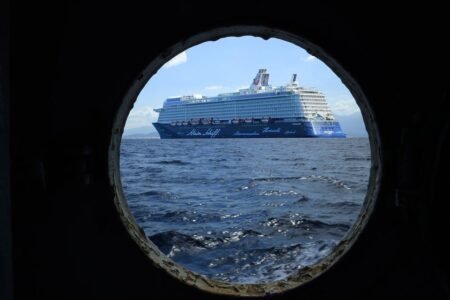This Memo provides answers on the main aspects of the proposals put forward by the Commission for the Multiannual Financial Framework. It covers (1) the main background elements on MFF definition and functioning, (2) the main novelties proposed by the Commission on policies and (3) new ideas on the financing of the future budget.
Advertisement
1. Definition, historical background and procedures
What is the Multiannual Financial Framework (MFF)?
The Multiannual Financial Framework (MFF) translates into financial terms the Union’s political priorities for at least 5 years. Article 312 of the Lisbon Treaty provides that the MFF is laid down in a regulation adopted unanimously by Council after obtaining the consent (adopts or rejects the whole package, no amendments) from the European Parliament. It sets annual maximum amounts (ceilings) for EU expenditure as a whole and for the main categories of expenditure (headings). It is not as detailed as an annual budget.
Why do we need a Multiannual Financial Framework?
By specifying the spending limits for each category of expenditure, the MFF imposes budgetary discipline and ensures that the Union’s expenditure develops in an orderly manner within the limits of its own resources and in line with Union’s policy objectives. In addition, this system ensures a predictable inflow of resources for the Union’s long-term priorities and gives greater certainty to beneficiaries of EU funds, such as SME’s, regions catching up, students, researchers, civil society organisations…
The MFF sets the cornerstones for the annual budgetary procedure. It considerably facilitates agreement on the yearly budget between the European Parliament and the Council which are the two branches of the Union’s budgetary authority. At the same time it ensures continuity towards achieving the priorities set for the benefit of Europe. The financial framework also lays down any other provisions required for the annual budgetary procedure to run smoothly.
Have we always dealt with budget through multiannual frameworks?
The MFF is part of the European Union’s functioning since 1988 and has covered periods varying from 5 to 7 years.
The first Financial Framework, the so called Delors Package I, covered the years 1988-1992 and focused on establishing the Internal Market and consolidating the multi annual research and development framework programme.
The second framework 1993-1999, the Delors Package II, gave priority to social and cohesion policy and the introduction of the euro.
The “Agenda 2000” covered the period 2000-2006 and focused on the
enlargement of the Union.
Finally, the MFF 2007-2013 gave priority to sustainable growth and competitiveness, in order to create more jobs.
The next MFF will present the budgetary priorities of the Union for the years 2014 to 2020.
How does the entry into force of the Lisbon Treaty in 2009 affects the MFF 2014-2020?
Prior to the entry into force of the Lisbon Treaty, MFF was the result of an interinstitutional agreement. Yet, the article 312 of the Treaty on the Functioning of the European Union also confers a legally binding value to the Multiannual Financial Framework to determine “the amounts of the annual ceilings on commitment appropriations by category of expenditure and of the annual ceiling on payment appropriations”. Besides, under the new treaty, the decision on the MFF will have to be taken by the Council deciding unanimously after receiving the Parliament’s consent.
Why should the Financial Framework be agreed no later than 2012?
It takes 12-18 months to agree on the legal bases for all the multi-annual programmes and projects which will be financed under the MFF, in areas such as research, education, cohesion, development aid, neighbourhood policy etc. In order to allow these programmes to start in January 2014, a political agreement on the ceiling in the MFF should be taken no later than one and a half year before the framework enters into force. Furthermore, the political agreement will need to be translated into a Council Regulation requiring the consent of the European Parliament.
What happens if there is no agreement?
If there is no agreement before the end of 2013, the 2013 ceilings will be extended to 2014, plus a 2% inflation adjustment. The Treaty also foresees the extension of the “other provisions” corresponding to the last year of the financial framework. This means that all the provisions on the adjustments and revisions of the financial framework and instruments outside the financial framework would be extended.
Whether or not there is an agreement on the next MFF, there will be financial framework ceilings in place for 2014 and the budget could thus be adopted in conformity with the Treaty.
The absence of an agreed financial framework 2014-20 would considerably complicate the adoption of new programmes. And in the absence of new legal bases, including their indicative financial envelopes, no commitments could be made for those multiannual spending programmes for which the legal base expires in 2013.
So, as in the case of late agreement, the 2014 budget would probably only cover the agricultural payments and the payments on outstanding commitments. In other terms, citizens benefiting from EU-funds, such as researchers, students, civil society organisations, would face severe drawbacks.
2. Novelties on expenditure side of the MFF
What is new for Common Agriculture Policy?
The Commission proposes to allocate 36,2% of the MFF to CAP as compared to 39.4% in the previous exercise (41.5% in 2013).
The basic two pillar structure of the Common Agricultural Policy (CAP) will be maintained. The main changes proposed by the Commission are as follows:
Greening of direct payments: to ensure that the CAP helps the EU to deliver on its environmental and climate action objectives, 30 % of direct support will be made conditional on “greening”. This means that all farmers must engage in environmentally supportive practices which will be defined in legislation and which will be verifiable. The impact will be to shift the agricultural sector significantly in a more sustainable direction, with farmers receiving payments to deliver public goods to their fellow citizens.
Convergence of payments: the levels of direct support per hectare will be progressively adjusted (while taking account of the differences that still exist in wage levels and input costs) in order to ensure a more equal distribution of direct payments.
The allocation of rural development funds will be revised on the basis of more objective criteria and better targeted to the objectives of the policy. This will ensure a fairer treatment of farmers performing the same activities. In order to avoid a reduction in farmers’ income, the Commission will propose to allow Member States, if they so wish, to maintain the current nominal level of funding through transfers from Pillar Two to Pillar One.
Capping the level of direct payments by limiting the basic layer of direct income support that large agricultural holdings may receive, while taking account of the economies of scale of larger structures and the direct employment these structures generate. The Commission proposes that the savings be recycled into the budgetary allocation for rural development and retained within the national envelopes of the Member States in which they originate.
The Commission proposes to allocate 281.8 billion for Pillar I of the Common Agricultural Policy and 89.9 billion for rural development for the 2014-2020 period. This funding will be complemented by a further 15.2 billion.
What is new for Cohesion policy?
The Commission proposes to allocate 36,7% of the MFF to Cohesion policy as compared to 35% in the previous exercise.
The main changes proposed by the Commission are as follows:
The proposal foresees the creation of a category of intermediate regions whose GDP is between 75% and 90% of the average EU GDP. This new category will complement the two existing ones (convergence regions and competitiveness regions).Those “transition regions” should retain two thirds of their previous allocations for the next MFF period. The poorest regions and Member States of the European Union would then be helped in priority in order for them to catch up with the more prosperous Member States.
Introducing conditionality in cohesion policy: it will be based on results and incentives to implement the reforms needed to ensure effective use of the financial resources. In addition, 5% of the cohesion budget for each Member State will be set aside as a performance reserve and allocated, following a mid-term review, to those Member States whose programmes have contributed most to progress in meeting agreed milestones set in the development and investment partnership contracts.
The Commission proposes the creation of a common strategic framework for all structural funds to translate the Europe 2020 objectives into investment priorities. In operational terms, the Commission proposes to conclude a partnership contracts with each Member State. These contracts will set out the commitment of partners at national and regional level to utilise the allocated funds to implement the Europe 2020 strategy.
The European Social Fund (ESF) will continue to play a key role in fighting unemployment and high rates of poverty, and delivering headlines targets of Europe 2020. The ESF will represent 25% of the budget allocated to cohesion policy, i.e. 84 billion.
The Commission proposes to allocate 376 billion to Cohesion policy instruments in general (including the Connecting Europe facility see below).
What is new for Infrastructure and Interconnection of Internal Market?
The Commission proposes the creation of a Connecting Europe Facility to accelerate the infrastructure development in transport, energy and ICT across the EU to the benefit of all. Experience shows that national budgets will never give sufficiently high priority to multi-country, cross-border investments to equip the Single Market with the infrastructure it needs. EU budget can secure funding for the pan-European projects that connect the centre and the periphery.
This Facility will be centrally managed and will be funded from a new section of the budget. Co-financing rates from the EU budget will be higher when the investments take place in ‘convergence’ regions than in ‘competitiveness’ regions. Local and regional infrastructures will be linked to the priority EU infrastructures, connecting all citizens throughout the EU, and can be (co-) financed by the structural funds (cohesion fund and/or ERDF, depending on the situation of each Member State/region).
The Connecting Europe Facility offers opportunities for using innovative financing tools to speed up and secure greater investment than could be achieved only through public funding. The Commission will work closely with the EIB and other public investment banks to combine funding of these projects. In particular, the Commission will promote the use of EU project bonds1 as a means of bringing forward the realisation of these important projects.
The Commission proposes to allocate 40 billion to this priority, to be complemented by an additional 10 billion ring fenced to related transport investments inside the Cohesion Fund. This amount comprises 9.1 billion for the energy sector, 31.6 billion for transport (including 10 billion inside the Cohesion Fund) and 9.1 billion for ICT.
What is new for Research policy?
The creation of a common strategic framework in research and development (to be called Horizon 2020), which means that the existing three research and innovation instruments (7th framework programme, Competitiveness and Innovation Framework Programme and the European Institute for Innovation and Technology) will be brought together. It will be closely linked to key sectoral policy priorities such as health, food security and the bio-economy, energy and climate change. The European Institute for Technology will be part of the Horizon 2020 programme and will play an important role in bringing together the three sides of the knowledge triangle education, innovation and research through its Knowledge and Innovation Communities.
On the financing side, innovative financial instruments will help leveraging private investments. Public Private Partnerships, as well as Public to Public Partnerships, will be promoted. Funding schemes will be standardized and simplified. Likewise, there will be one single set of rules for participation, audit, support structures, dissemination of results and reimbursement schemes, across all funding schemes.
The Commission proposes to allocate 80 billion for the 2014-2020 period for the Common Strategic Framework for Research and Innovation. This funding will be complemented by important support from the Structural Funds (60 billion for 2007-2013).
What is new for Environment and Climate action policies?
Environmental policy and Climate change Action priorities will be ‘mainstreamed’ into all the major EU funding instruments, including cohesion, agriculture, maritime and fisheries, research and innovation, as well as into external aid programmes. The Commission intends to increase the proportion of climate related expenditure to at least 20%, with contributions from different policy fields subject to impact assessment evidence. This approach will maximise synergies between environmental policies and other areas, recognising that the same actions can and should pursue a variety of complementary objectives. This approach will also help to avoid a proliferation of programmes and to minimise administrative burden.
In addition to mainstreaming, the Commission proposes the continuation of a dedicated environmental programme as successor to the current LIFE+ programme. The Commission considers that the future programme should remain centrally managed, but that management tasks could to a large extent be delegated to an existing executive agency, such as the Executive Agency for Competitiveness & Innovation. The Commission proposes to allocate 3.2 billion for 2014-2020 to the LIFE+ programme (0.8bn on climate and 2.4bn for environment).
Is there something new for Education and Training?
A simplification of the current structure to one main programme is foreseen in order to avoid fragmentation, overlapping and/or proliferation of projects lacking the critical mass necessary to a lasting impact. The New Education Europe programme will include three key priorities. First, it will support trans-national learning mobility. Strict quality conditions for mobility, concentration on key policy objectives where critical mass can be achieved and complemented with other EU programmes will be instrumental in ensuring very high European added value. Secondly, it will foster co-operation between education institutions and the world of work in order to promote the modernisation of education, innovation and entrepreneurship. Thirdly, it will provide policy support to gather evidence on the effectiveness of education investments and help Member States to implement effective policies.
The Commission proposes to allocate 15.2 billion in the area of education and training. This funding will be complemented by important support from the Structural Funds (72.5bn for 2007-2013).
Is there anything for the challenges of migration and home affairs?
The Commission proposes to reduce the number of programmes to two: Migration and Asylum Fund and an Internal Security Fund. Both funds will have an external dimension ensuring continuity of financing, starting in the EU and continuing in third countries (for example concerning the resettlement of refugees, readmission and regional protection programmes). They will simplify the expenditure instruments and ensure the smooth creation of an area without internal borders, where EU citizens and third-country nationals with legal rights of entry and residence may enter, move around, live and work.
The Commission also foresees a move away from annual programming towards results-driven, multi-annual programming, thus reducing workload for the Commission, the Member States and the final beneficiaries.
The Commission proposes to allocate 8.2 billion for the 2014-2020 period in the area of home affairs.
What about Enlargement, Neighbourhood and External relations?
Several important changes to be noted:
A single integrated pre-accession instrument is proposed as the financial pillar of the Enlargement Strategy, encompassing all dimensions of internal policies and thematic issues. It will be implemented through national/multi-beneficiary programmes agreed with the beneficiaries and will also mirror the Structural Funds, the Cohesion Fund and the European Agricultural Fund for Rural Development (EAFRD).
The European Neighbourhood Instrument (ENI) will be the financial instrument through which the bulk of EU assistance to neighbouring countries is provided. It will support the European Neighbourhood Policy and bilateral partnerships (including bilateral Association Agreements). In addition to the ENI, partner countries will also benefit from other instruments, such as the European Initiative for Democracy and Human Rights or the Instrument for Nuclear Safety Co-operation and responding to crisis situations (Humanitarian Assistance, Macro Financial Assistance, Instrument for Stability). The Neighbourhood Investment Facility, which the ENI will continue to support, will also provide a flexible and effective financial tool to support investment in partner countries in the areas of transport and energy interconnections, environment and climate change and economic development.
The Commission proposes to discontinue funding of programmes in industrialised and emerging countries and instead to create a new Partnership Instrument to support public diplomacy, common approaches and the promotion of trade and regulatory convergence in those cases where funding can contribute to strengthening the EU’s partnerships around the world. This reflects international changes now underway.
Also, the proposal foresees the creation of a pan-African instrument to support the implementation of the Joint Africa Europe Strategy, focusing on the clear added value of cross-regional and continental activities. It will be flexible enough to accommodate contributions from EU Member States, African States, financial institutions and the private sector.
The Commission proposes to allocate 70 billion for the 2014-2020 period for traditional external instruments. This will be complemented by funding out the budget and the MFF for the European Development Fund (29.9 billion).
3. Financing and own resources
Where does the money come from?
The European Union has three types own resources to finance its expenditure:
traditional own resource (sugar levies and agricultural and customs duties),
VAT-based own resource (a portion of the national VAT collected by Member States at national level),
GNI-based own resource (the “national contributions” based on each Member State GNI).
In 2011, 76% of the revenue of the EU budget will come from the GNI-based resource, 12% from customs duties and sugar levies and 11% from the VAT based resource. The remaining 1% comes from taxes paid by EU staff and from other miscellaneous sources such as fines on companies that breach competition or other laws, unspent amounts from previous years.
Why propose new own resources?
Because the current system has a number of drawbacks. It is opaque and complex. It is perceived as lacking fairness by most Member States notably with regard to corrections, of which the British rebate is the most well known, but it is less known that Germany, the Netherlands, Austria and Sweden have exceptions from financing the UK reduction (a “rebate on the rebate!”). The same countries have lower rate of their VAT contributions and the Netherland and Sweden in addition decreased national contributions based on a country’s GNI. The current financing also relies excessively on national contributions. For many, these are seen as expenditures to minimize and for which a national return must be justified. Finally, with the exception of customs duties stemming from the customs union, existing resources do not display a clear link to EU policies.
Our aim with this proposal is therefore to decrease national contributions and thus contribute to budgetary consolidation efforts in the Member States; to create a link between EU policy objectives and the EU financing; and to make the system more transparent and fairer. This is not about increasing EU budget.
Has the financing of the EU budget been changed before?
Six own resources decisions have been adopted since 1970. In fact, the structure of the financing side has evolved considerably over time. Reforms on the expenditure side have generally been accompanied by reforms of the way the Union is financed. The contribution based on Gross National Income (GNI), i.e. proportional to each Member State’s wealth, has taken on a growing importance and now represents three-quarters of the budget. And a large number of complex corrections and special arrangements have been introduced over time, both on the revenue and expenditure side of the budget.
The result of these changes is that budget negotiations have recently been heavily influenced by Member States’ focus on the notion of net positions (“juste retour” debate) with the consequence of favouring instruments with geographically pre-allocated financial envelopes, rather than those with the greatest EU added value.
Who decides on own resources?
The Council adopts a decision by unanimity, after consulting the European Parliament. In order to enter into force, this Decision must be ratified by all Member States, in accordance with their constitutional requirements (art 311).
What would be the new resources then?
The changes proposed by the Commission are as follows:
Simplify Member States’ contribution by ending the complex VAT-based own resource from 2014. This will render the system of contributions simpler and more transparent.
Introduce two new own resources: a tax on the financial transactions (FTT) and a modernized VAT. This will facilitate budgetary consolidation in the Member States by reducing their contributions to the EU budget, bring a new impetus to the development of the Internal Market in the areas of VAT and financial sector taxation.
Reform the correction mechanisms by replacing all existing corrections by a simple and transparent system of lump sums related to the prosperity of the Member States.
The present Commission proposals make full use of the possibilities offered by the Lisbon Treaty to establish new categories of own resources or to abolish existing ones. The report on the operation of the own resources system highlights how each of these proposals relates to and complement the others.
Why dropping the VAT-based resource?
The Commission proposes to eliminate the complex VAT-based own resource. Compared to the GNI-based own resource, the current VAT-based own resource has little added value. To create a comparable tax base, VAT-based contributions result from a mathematical calculation rather than passing directly from the citizen to the EU. Furthermore, VAT-based contributions are capped in proportion to GNI and thus, partly comparable to GNI-based contributions. As such the VAT-based own resource contributes to the complexity and the opacity of the EU budget financing system.
Why choose EU taxation of the financial sector and EU VAT?
The analysis of the various potential candidates as own resources gave rise to a substantial technical work. The following key elements were highlighted:
EU taxation of the financial transaction (FTT): It would give extra room for manoeuvre to national governments and contribute to general budgetary consolidation efforts. Such taxation exists at national level in some Member States, but action at EU level could prove more effective and efficient, and it could play a role in reducing the existing fragmentation of the Internal Market. The Commission will make this proposal after the summer.
Modernized VAT: It would create a genuine link between national and EU VAT and foster additional harmonization of national VAT systems. It would provide significant and stable receipts to the EU with limited administrative and compliance costs for national administrations and business. It forms part of a broader recent Commission initiative launched in December 2010 with the issuance of the Green Paper on the future of VAT aimed at reducing the extent of tax-induced distortions in the internal market. Broadening the tax base, reducing the scope for fraud, improving the administration of the tax and reducing compliance costs administrative cooperation in the context of a broad reform of VAT could deliver important results and generate new revenue streams for the Member States and the EU.
How much revenue do you expect from those new own resources?
It is estimated that by 2020, the new own resources could amount to almost half of EU Budget revenue, while the share of GNI-based contributions will go down to around one third (from over three quarters today). The national contributions of Member States will decrease accordingly, in proportion to their respective GNI (that is in proportion to their relative wealth).
What are the correction mechanisms?
The 1984 Fontainebleau European Council set out important guiding principles to ensure fairness in the EU budget. It indicated in particular that “expenditure policy is ultimately the essential means of resolving the question of budgetary imbalances”. It acknowledged, nevertheless, that “any Member State sustaining a budgetary burden which is excessive in relation to its relative prosperity may benefit from a correction at the appropriate time”. These principles have been confirmed and consistently applied in successive own resources decisions.
Different complex correction mechanisms have been added since then, including:
a correction in favour of the UK (UK rebate);
reduced financing of the UK correction for Germany, the Netherlands, Austria and Sweden (“rebates on the rebate”);
a share of 25% retained by Member States as “collection costs” for traditional own resources (notably customs duties), which constitutes a hidden correction to the benefit of a limited number of Member States;
temporary reduction in VAT-based contributions for Germany, the Netherlands, Austria and Sweden; and
temporary reduction in GNI-based contributions for the Netherlands and Sweden.
What is going to happen to the UK rebate?
The Commission proposes to transform the current mechanism into a lump sum gross reduction on the GNI-based own resources payments. A system of lump sums would be transparent and easy to understand, thus making it more open to public and parliamentary scrutiny; it would be fair, by treating large contributors to the EU budget in line with their economic prosperity, and ensuring a balanced financing of the corrections; its ex ante nature would pre-empt any perverse incentives.
The analysis behind this proposal is the following. At the time of its introduction, in 1984, the UK correction offered a response to what was clearly an inequitable situation: the UK was facing an excessive budgetary burden in comparison to its relative prosperity. However, this situation has evolved. The UK is now one of the most affluent EU Member States, able to fully contribute to solidarity with the poorer Members of the Union. The budgetary burden of the UK is also now more in line with that of some other net contributors, due to the progressive reduction of the share of the CAP in EU budgetary expenditure, which is expected to continue decreasing in the next financial framework, and the share of the existing VAT-based own resource in EU own resources, which the Commission proposes to eliminate fully beyond 2013. In addition, with the elimination of the current VAT-based own resource, essential data for calculating the UK correction will no longer be available.
Source: European Commission







